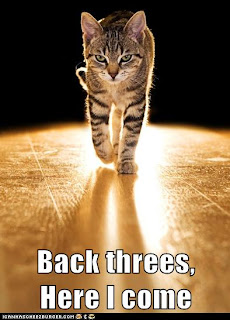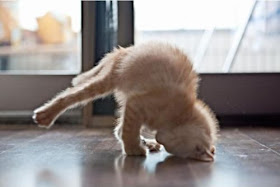A long time ago, before even I was born, ice rinks didn't come in standard sizes. They didn't even come in standard shapes. Some were open air rinks on ponds, other were indoors. In that era (the era of my 90 year old mother's childhood) many dances were circle dances. There were also dances in the shapes of 8s, and a couple of pattern dances as we know them today, but I want to focus on the circle dance.
In the circle dance, when the music began, the skaters started wherever they were on the ice and fit the dance in. The idea of a modern pattern dance, where the skater is at a particular reference point, with a particular step, was unknown. In social dance skating on the beat was not a priority. Rinks were so crowded that people skated where they could, maneuvering around other skaters by holding a step or adding extra steps to avoid traffic, until they could get back 'on the pattern'.
 |
| What ice dance may have been like before pattern dances |
Sadly, these dances disappeared with the standardization of ice dances as pattern dances and the advent of ice dance testing on an industrial scale in the 40's.
Testing in its own way is a fun challenge, but there's no reason there can't be 'fun dances' as well that could be done by couples or solo skaters on public. No pressure about precise placement of the steps relative to the rink, no worry about extension, or putting in an extra stroke to work around traffic, or worrying about some judge. They should be fun!
So I pulled out my copy of The History of Ice Dance, and started looking at some of the circle dance patterns to see what I could use. Two problems emerged:
- In the old days, people had skated figures for a while before taking up ice dance. They could do rockers, brackets, and counters, so many dances had these in them. I wanted to find some dances or footwork suitable for beginners on public. *cough, Me, cough*
- The diagrams often had notation that no longer made sense. Ye Gods! What's a "FIOB"? A 'forward inside outside bracket'? And the drawings were so tiny or such poor resolution I couldn't always figure out the steps from the tracings.
And whatever these steps/footwork are, they should be able to be skated to any rhythm (tango, 4/4 rock/pop music, or the rare waltz on public) without any need for obsessing about placement on the ice. Don't have enough power to do a pattern in a big circle, do it in a small circle. Don't like the music? Don't worry about the beat!
 |
| I don't have to worry about fussy ice dance crap? Woohoo! |
So, that's where I am, working on notation and simple footwork ideas. I'll introduce the notation soon and show some footwork patterns / a dance and get some feed back from you.
Tomorrow is a funny post, see you then!






















